The Theopetra Cave and the Oldest Human Construction in the World
The Theopetra Cave is an archaeological site located in Meteora, in the central Greek region of Thessaly. As a result of archaeological excavations that have been conducted over the years, it has been revealed that the Theopetra Cave has been occupied by human beings as early as 130,000 years ago. In addition, evidence for human habitation in the Theopetra Cave can be traced without interruption from the Middle Paleolithic to the end of the Neolithic period. This is significant, as it allows archaeologists to have a better understanding of the prehistoric period in Greece.
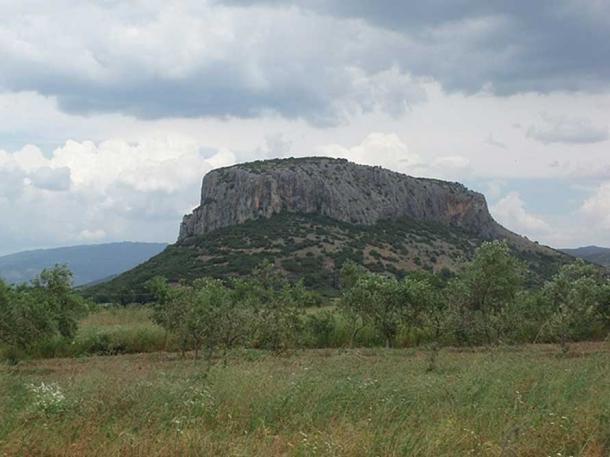
The cave is located on the slopes of a limestone hill overlooking Theopetra village. (CC BY-SA 4.0)
Occupation of the Theopetra Cave
The Theopetra Cave is situated on the northeastern slope of a limestone hill, about 100 m (330 ft above a valley. The cave overlooks the small village of Theopetra, and the Lethaios River, a tributary of the Pineios River, flows nearby. According to geologists, the limestone hill was formed between 137 and 65 million years ago, which corresponds to the Upper Cretaceous period. Based on the archaeological evidence, human beings only began to occupy the cave during the Middle Paleolithic period, i.e., around 130 000 years ago. The cave itself has been described as roughly quadrilateral in shape with small niches on its periphery and covers an area of about 500 sq meters (5380 sq ft). The Theopetra Cave has a large entrance, which allows light to enter abundantly into the interior of the cave.
- Balankanché Cavern: Underground World Tree Reveals Secrets of Sacred Maya Beliefs
- Ten Amazing Caves of the Ancient World
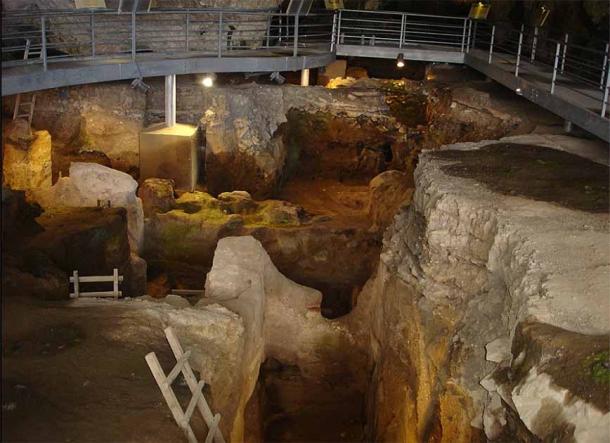
The interior of the Theopetra Cave. (Tolis-3kala/CC BY-SA 4.0)
Investigation Begins
The archaeological excavation of the Theopetra Cave began in 1987 and continued up until 2007. This project was directed by Dr. Nina Kyparissi-Apostolika, who served as the head of the Ephorate of Palaeoanthroplogy and Speleography when the excavations were being carried out. It may be mentioned that when the archaeological work was first conducted, the Theopetra Cave was being used by local shepherds as a temporary shelter in which they would keep their flocks. It may be added that the Theopetra Cave was the first cave in Thessaly to have been archaeologically excavated, and also the only one in Greece to have a continuous sequence of deposits from the Middle Paleolithic to the end of the Neolithic period. This is significant, as it has allowed archaeologists to gain a better understanding of the transition from the Paleolithic to the Neolithic way of life in mainland Greece.
- God or the Devil? Whose Mystical Eyes Follow Visitors through the Bulgarian Prohodna Cave?
- The Obscure Mangiapane Cave in Sicily: Prehistoric Cave and Site of Modern Feasts
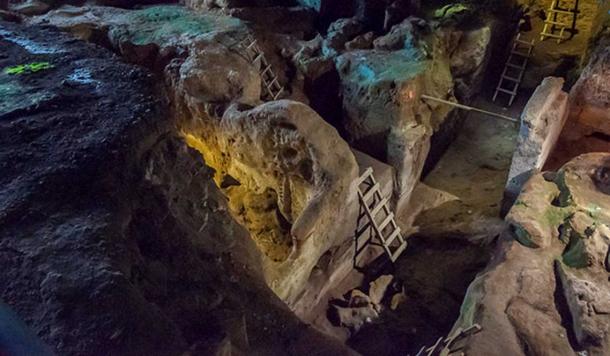
Excavations at the Theopetra cave began in 1987 under the direction of N. Kyparissi-Apostolika. (CC BY-NC-ND 2.0)
Several interesting discoveries have been made through the archaeological study of the Theopetra Cave. One of these, for instance, pertains to the climate in the area when the cave was being occupied. By conducting micromorphological analysis on the sediment samples collected from each archaeological layer, archaeologists were able to determine that there had been hot and cold spells during the cave’s occupation. As a result of these changes in the climate, the cave’s population also fluctuated accordingly.
The World’s Oldest Wall
Another fascinating find from the Theopetra Cave is the remains of a stone wall that once partially closed off the entrance of the cave. These remains were discovered in 2010 and, using a relatively new method of dating known as Optically Stimulated Luminescence, scientists were able to date this wall to around 23000 years old. The age of this wall, which coincides with the last glacial age, has led researchers to suggest that the wall had been built by the inhabitants of the cave to protect them from the cold outside. It has been claimed that this is the oldest known man-made structure in Greece, and possibly even in the world.
- Is This a Huge Million-Year-Old, Man-Made Underground Complex?
- Cairn de Barnenez: One of the Oldest Structures in the World
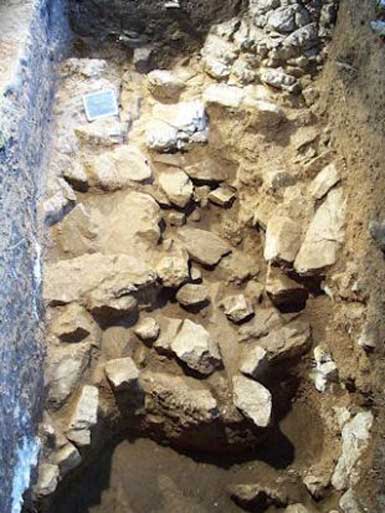
The wall at Theopetra - possibly the oldest existing man-made structure. (Visit Meteora)
A year before this incredible discovery was made, it was announced that a trail of at least three hominid footprints that were imprinted onto the cave’s soft earthen floor had been uncovered. Based on the shape and size of the footprints, it has been speculated that they were made by several Neanderthal children, aged between two and four years old, who had lived in the cave during the Middle Paleolithic period.
In 2009, the Theopetra Cave was officially opened to the public, though it was closed temporarily a year later, as the remains of the stone wall were discovered in that year. Although the archaeological site was later re-opened, it was closed once again in 2016 due to the risk of landslides. The cave and its museum are once again open to the public.
Top image: Stone Age scene recreation in Theopetra cave. Source: Kartson
By Wu Mingren
References
Duckeck, J., 2015. Spilia Theopetra - Theopetra Cave.
Available at: http://www.showcaves.com/english/gr/caves/Theopetra.html
Greek Travel Places, 2017. Theopetra Cave.
Available at: https://www.gtp.gr/TDirectoryDetails.asp?ID=15004
Kyparissi-Apostolika, N., 2015. The Theopetra Cave in Thessaly: a 130,000 year old prehistory (Part 1). Available at: https://www.archaeology.wiki/blog/2015/10/05/theopetra-cave-thessaly-130000-year-old-prehistory-part-1/
Leonard, J., 2010. Wall discovered in central Greece could be world's oldest.
Available at: http://www.ekathimerini.com/144782/article/ekathimerini/life/wall-discovered-in-central-greece-could-be-worlds-oldest
Lonely Planet, 2017. Theopetra Cave. Available at: https://www.lonelyplanet.com/greece/meteora/attractions/theopetra-cave/a/poi-sig/1379338/1316628
Ministry of Culture and Sports, 2012. Cave Theopetra. Available at: http://odysseus.culture.gr/h/2/eh251.jsp?obj_id=1616
The Visit Meteora Team, 2018. Theopetra Cave inhabited by humans 130,000 years ago.
Available at: https://www.visitmeteora.travel/theopetra-cave-inhabited-by-humans-130000-years-ago/
















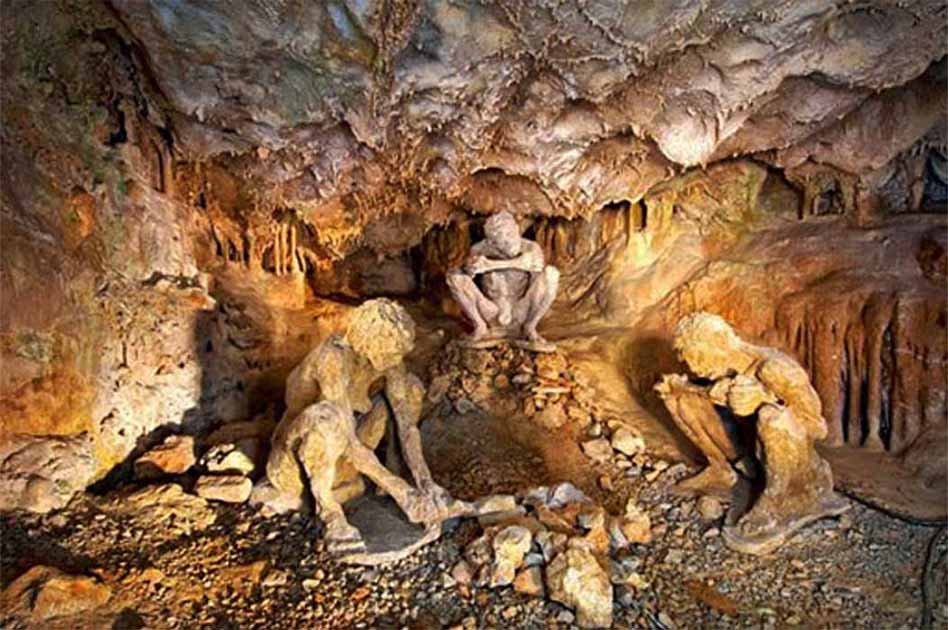

Comments
That so-called man-made ‘wall’ looks like a random rubble pile. Or was it nicely cut and stacked before it was knocked down? Or was it just a rush job to seal the cave? But then why the rush?
But you have to wonder about the ancient megalith and subterranean ruins, where the most intriguing may be in China. As a culture, you just don’t start off as builders with that type of scale. That type of scale come only after a long evolving of understand how to build with stone, how to design, cut, move and erect it, where the big projects might have been more a gradual prgression, from simple to big and ornate, over a long period of time. The archaelogists often date the sediment or things left when the site was last abandoned, but of course it’s then very inaccurate to conclude that date as the build date. Many ruins, maybe all of them, were later resettled. Many Indus valley ruins show bricks laid over megalith stone ruins, where the brick layers are absurdly give credit for the entire construction. So maybe we’re wrong about when the aboriginals started building with stone. It probably goes back much further. And then, as just about always, there is the Atlantis question, where the Richat Structure and Ice Age comes into play.
Nobody gets paid to tell the truth.
Theopetra means God Rock. Wonder if that has significance to this age old site?
By some accounts, Grand Zimbabwe may be even older.
The picture at the top of this article come from a cave in the Mani, Peloponnese and not Theopetra,